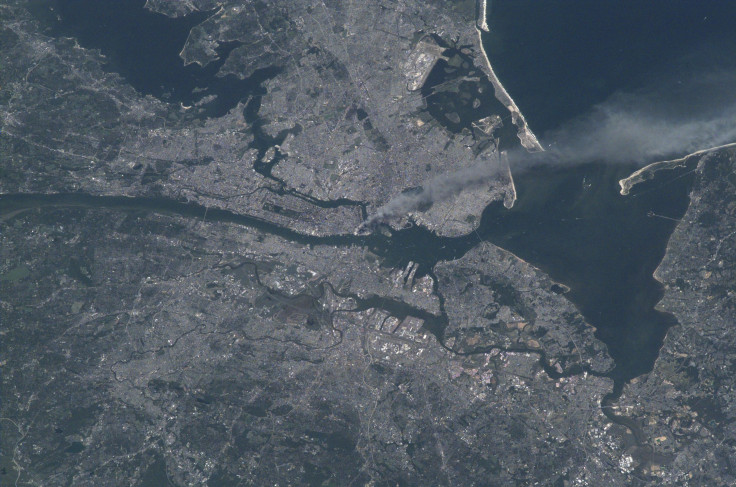NASA Shares 9/11 Images Taken From Space On Attack Anniversary

On the 16th anniversary of the deadliest terrorist attack on U.S. soil — part of which was beamed to television screens around the world, showing an aircraft crashing into the World Trade Center in New York City — that killed almost 3,000 people, NASA released images from that fateful day in 2001 that show the city in the aftermath of the attack, as seen from space.
The International Space Station, coincidentally, happened to be flying over the New York City area moments after the twin towers came down, and U.S. astronaut Frank Culbertson was aboard the spacecraft as commander of Expedition 3. He posted a public letter the next day, in which he recounted his immediate reaction to the news.
“I glanced at the World Map on the computer to see where over the world we were and noticed that we were coming southeast out of Canada and would be passing over New England in a few minutes. I zipped around the station until I found a window that would give me a view of NYC and grabbed the nearest camera. It happened to be a video camera, and I was looking south from the window of Michael's cabin.
“The smoke seemed to have an odd bloom to it at the base of the column that was streaming south of the city. After reading one of the news articles we just received, I believe we were looking at NY around the time of, or shortly after, the collapse of the second tower. How horrible…” Culbertson wrote in the letter.
“It's difficult to describe how it feels to be the only American completely off the planet at a time such as this. The feeling that I should be there with all of you, dealing with this, helping in some way, is overwhelming. I know that we are on the threshold (or beyond) of a terrible shift in the history of the world. Many things will never be the same again after September 11, 2001,” he added.
Even as the space station moved along its path and lost its view of New York City, other NASA satellites caught some images of the attack’s immediate aftermath as well. One of them was the Terra satellite, whose onboard Moderate-resolution Imaging Spectroradiometer instrument recorded an image of the large smoke plume rising from the city a few hours after the terrorist attack.

The next day, Sept. 12, 2001, another NASA satellite — Landsat 7 — captured a true-color image of the site of the attack from where smoke was still billowing.

Hours after the Landsat 7 photograph was taken, Culbertson was writing his letter aboard the space station, in which, commenting on the still-visible smoke, he said: “It’s horrible to see smoke pouring from wounds in your own country from such a fantastic vantage point. The dichotomy of being on a spacecraft dedicated to improving life on the earth and watching life being destroyed by such willful, terrible acts is jolting to the psyche, no matter who you are.”
#NeverForget those lost on #September11th. Here are recent views of NYC & DC from @Space_Station. We remember: https://t.co/dumqwjiDFS pic.twitter.com/l2kcIhJ8Sg
— NASA (@NASA) September 11, 2017
© Copyright IBTimes 2025. All rights reserved.





















